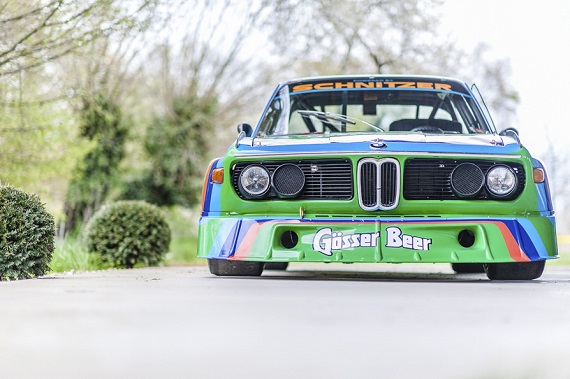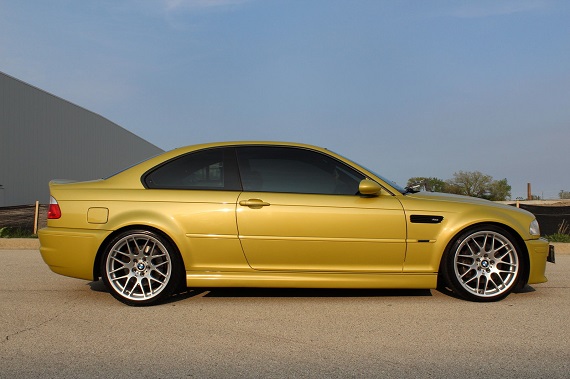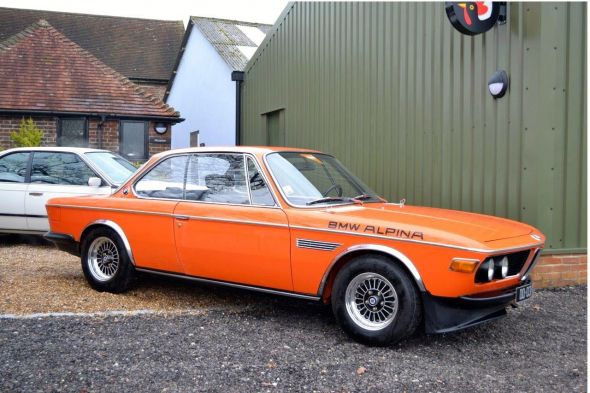While there are iconic liveries that permeate motorsports, sometimes there are equally iconic aerodynamic aids. The 1970s and 1980s saw some incredible experiments, from the Brabham BT46 ‘Fan Car’ which sucked all of the air out from underneath the chassis, literally sticking the car to the road to the 935/78 ‘Moby Dick’ car, which somewhere underneath the long tail and stretched front end was actually a 911 (in theory, at least!). For BMW, exploiting the Group 5 FIA rules to suit their E9 chassis and make it competitive with the Porsche 911. That meant the aerodynamics of the 3.0CS had to be altered, and the result was wings, fins, and flares. But if the road going version of the also lightened 3.0CSL looked outrageous, the racing version simply took the recipe and turned it up to 11. Giant boxed flares widened the E9 half again. A huge front air dam looked capable of clearing cattle on the Sante Fe railway. Huge centerlock BBS magnesium wheels sported a footprint that would make most large commercial planes jealous. And if the tires didn’t shock them, the huge cantilevered wing protruding from the back of the trunklid certainly would spoil their plans to go airborn. This was the legendary car which gained the name “Batmobile”, and though they were not ultimately able to defeat Porsche in the Group 5 contest for 1976 (you know that, of course, because of the many Martini Championship Edition Porsches we feature), they are no less memorable than the 935:
Tag: CSL
The year was 1994, and BMW brought some pre-production M3s in Dakar Yellow to various tracks around the U.S. to engage their primary target audience; enthusiasts. I still remember seeing them and being both very excited and slightly let down. From a performance standpoint, even in turned-down U.S. form the M3 was a potent small sedan. 240 horsepower was top of the small car market back then and around a track, stock for stock the E36 was easily a match for the outgoing fan-favorite E30. Coupled with an eye-searing color, it was an impressive and modern package that I loved. But I also loved the street-racer aspect of the E30, and that was something that the E36 didn’t capture well….at first. That was remedied later in 1995 with the introduction of the “CSL” version of the E36. Stripped out, available only in Alpine White and with Motorsports GmbH details throughout, the M3 Lightweight channeled both the E9 3.0CSL racers that started the M trend and captured the spirit of the E30 with its giant, adjustable rear wing and splitter. Instantly these began popping up at track events; despite the entire production run of only 126 cars, it wasn’t uncommon in 1995 and 1996 to see 4 or 5 of these special cars turn up and trounce all the other cars with ease. Since new, these limited edition M3s have always held more value than nearly all of the rest of the model run – and as prices of all things M rise, it’s no surprise that it appears the tide is carrying them up as well:
CLICK FOR DETAILS: 1995 BMW M3 Lightweight on eBay
5 CommentsThey say imitation is the most sincere form of flattery, and when it comes to Alpina cars there certainly have been a lot of enthusiasts who are eager to copy the legends. Part of that is the great look that Alpina achieved, but also worth considering that Alpina models – especially early ones – command a premium that rivals some of the most exclusive models put out by the factory. Today, then, in honor of Coupe Week I have two E9 models. The first is a real-deal and rare 3.0CSL, but even then a special CSL; this one is an early carburetor model which was modified in period by Alpina to B2S spec. I then have an end-of-run U.S. spec 3.0CS that tries to imitate that look. These two cars obviously aren’t in contention with each other – but is the imitation good enough to warrant looking at?








